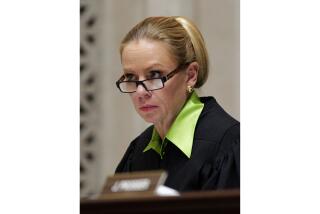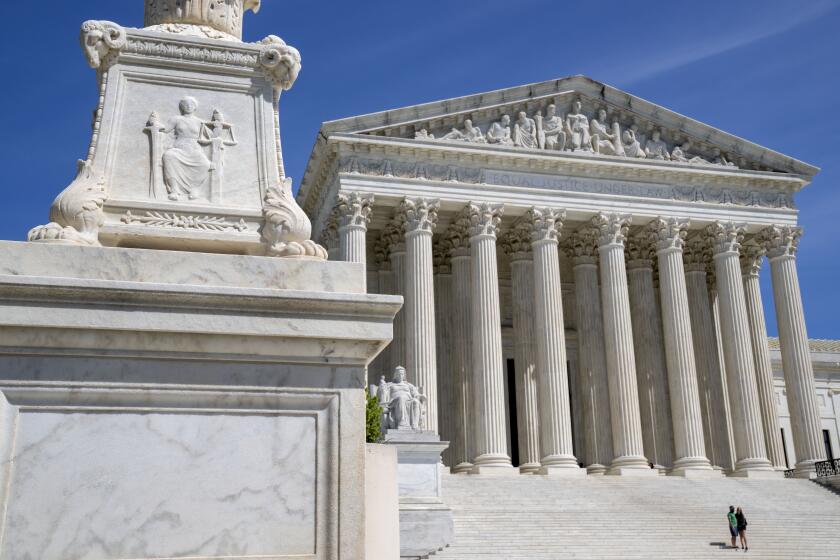Chief Judge Has Limited Power
- Share via
The chief judge of a federal appeals court has no special powers. He is truly a first among equals, establishing an agenda for the court only through the consent of his colleagues.
The chief judge does chair the circuit’s governing council, reviews complaints about judicial misconduct throughout the circuit and sits on the national Judicial Conference, which oversees federal court administration. The chief judge also sits on every en banc panel that decides some of the circuit’s most important cases and assigns the writing of opinions for every panel on which he serves when he is in the majority.
James R. Browning’s decision to step down as chief judge of the U.S. 9th Circuit Court of Appeals was carefully timed to ensure that Judge Alfred T. Goodwin would succeed him.
Must Step Down at 70
By law, the chief judge must step down at age 70, to be replaced by the judge who is next most senior in service, so long as that judge has not yet reached the age of 65.
Had Browning stepped down next fall, as he was originally expected to, he would have been succeeded by Judge J. Clifford Wallace of San Diego, since Goodwin turns 65 next week.
Some court watchers speculated that the timing was calculated by Browning, a Democratic appointee, to keep the chief judgeship away from Wallace. Both Goodwin and Wallace are appointees of President Richard M. Nixon, but Wallace is considered much more conservative.
But most believe Browning’s public pronouncement: that stepping down now will allow both Goodwin and Wallace a chance at the job. Goodwin will be forced to relinquish the post when he reaches age 70 in 1993. Wallace, who will then be 64, can then serve six years.
More to Read
Get the L.A. Times Politics newsletter
Deeply reported insights into legislation, politics and policy from Sacramento, Washington and beyond. In your inbox twice per week.
You may occasionally receive promotional content from the Los Angeles Times.










